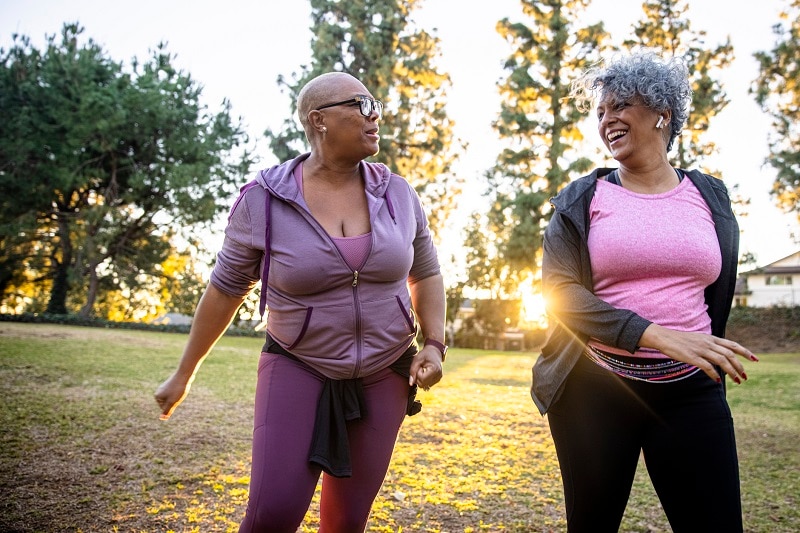Indulging in a festive meal is a holiday tradition – a ritual even dietitians encourage! While it’s tempting to curl up on the couch post-feast with a full belly, a dose of physical activity can go a long way in assisting with digestion and boosting energy. But after any large meal, you’ll want to think twice before hitting the gym with an intense workout. While exercise can aid digestion, too much activity can cause an upset stomach. Wise up with the tips below for an enjoyable and practical post-feast workout.
Exercising After Eating: Tips & Tricks
- The larger the meal, the longer it will take to digest. Give your body time to start digesting before jumping into a workout. Waiting 1-2 hours after eating a moderate size meal is optimal before exercising.
- Eating a small meal pre-workout can give you nutrients to energize your workout. Eating a large meal can cause cramping and bloating, potentially cutting your workout short.
- Meals higher in fat, fiber and protein usually digest slower, so it’s best to avoid them close to a workout.
- Eating a large meal too close to a workout can cause cramping, bloating, nausea and lethargy.
Time your exercises appropriately after a meal with these recommendations:
Immediately: walking
1-2 hours: weight training, biking and skiing
1.5-3 hours: running, swimming and crossfit
Best three exercises after a big holiday meal
1. Walking
This is the perfect (and probably favorite) exercise following a big meal. Family and friends of all ages and fitness levels can enjoy a stroll. Walking is low-impact and helps to speed up the food moving from the stomach to the small intestines, which could help with heartburn and acid reflux.
Walking for Weight Loss – Why It Works & How to Get Started
How Mindful Walking Benefits Your Health
Step it UP! Ways to Increase Your Daily Step Count
2. Cores exercises
You may not think moving your midsection after eating a full meal would be wise, but on the contrary, core exercises after a meal could help. Performing some gentle core exercises can help ease some post-meal bloat and aches.
A Celebrity Trainer Recommends These Top 4 Core-Strengthening Exercises
An Ab-solutely Effective Core Workout
A Simple Core Workout to Help You Combat Lower Back Pain
Why is Core Strength Important? A Trainer Explains, and Shares Tips for Strengthening Yours
3. Yoga
A 15-minute yoga session gently moves your body in a way that can lessen bloating. Yoga promotes full-body relaxation, which can aid in digestion. Try easy poses and deep breathing to increase digestion and energy.
Morning Yoga Sequence for Beginners
How to Start Doing Yoga Again After Taking a Break
The Gratitude Yoga Flow You Didn’t Know You Needed
9 Best Stretches Before Bed Time


